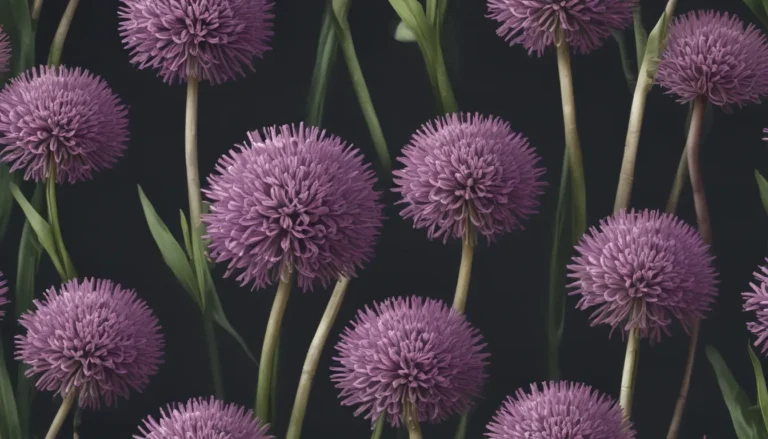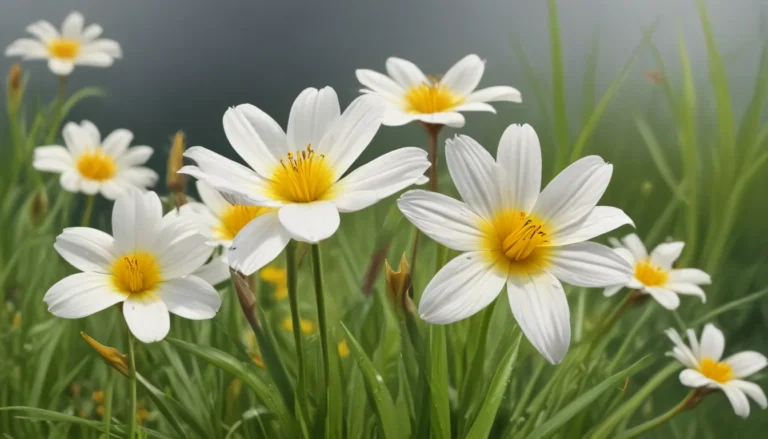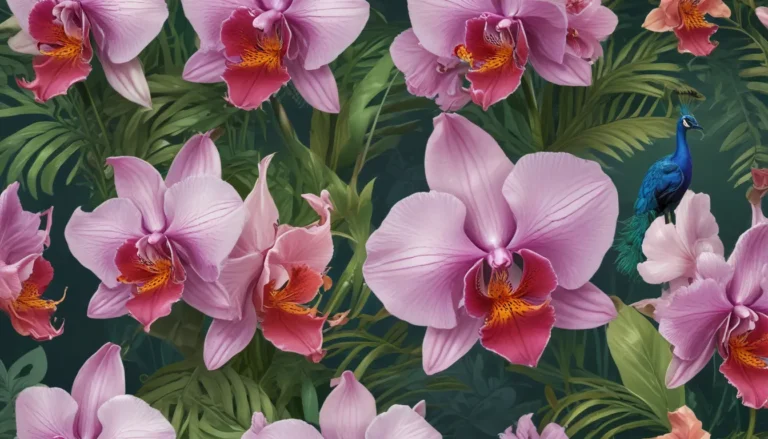The pictures we use in our articles might not show exactly what the words say. We choose these pictures to make you interested in reading more. The pictures work together with the words but don’t take their place. The words still tell you the important facts.
Are you ready to uncover the mesmerizing world of snowdrops, also known as Galanthus? These enchanting flowers signal the end of winter and the arrival of warmer days with their elegant white blooms. But there's more to snowdrops than meets the eye. Join us as we delve into 20 unbelievable facts about these captivating flowers, from their fascinating history to their unique adaptations and medicinal uses. Get ready to be amazed by the wonders of snowdrops and discover the secrets they hold.
Embracing the Early Blooms
As one of the earliest flowering plants of the year, snowdrops emerge from the cold ground as winter gives way to spring. Their delicate petals add a touch of elegance to gardens and landscapes, bringing hope and purity to the awakening season.
The Magic of Galanthus
The scientific name for snowdrops, Galanthus, stems from the Greek words "gala," meaning milk, and "anthos," meaning flower. This reference to their pure white color perfectly captures the essence of these enchanting blooms.
Exploring Their Origins
Native to Europe and Asia, snowdrops can be found in woodlands, meadows, and gardens across these regions. Their ability to thrive in diverse environments adds to their allure and charm.
Symbolism and Significance
Snowdrops symbolize hope and purity, often associated with the arrival of spring and new beginnings. Their unique scent attracts early pollinators like bees and butterflies, adding to their allure.
Resilience in the Cold
Despite their delicate appearance, snowdrops can withstand freezing temperatures and even tolerate the occasional snowfall. Their ability to thrive in harsh conditions showcases their resilience and strength.
Varieties and Vibrancy
While white is the predominant color of snowdrops, some varieties feature yellow accents on their inner petals, adding a vibrant touch to their graceful blooms. Each named variety brings its subtle differences, making them even more intriguing.
From Garden Novelties to Beloved Blooms
Snowdrops were not always popular garden plants, gaining recognition in the 19th century and steadily becoming favorites among garden enthusiasts. Their unique beauty and symbolic significance have captivated hearts around the world.
The Magic of Bulbous Growth
As bulbous plants, snowdrops grow from underground storage organs that help them survive harsh weather conditions. Their rapid multiplication through self-seeding creates captivating displays in gardens and natural settings.
Inspiring Art and Literature
The delicate beauty of snowdrops has inspired artists and writers throughout history, who have included them in their works as symbols of purity, rebirth, and the arrival of spring. Their brief blooming period makes them even more precious and cherished.
Cultivating Beauty in Containers
For those without garden space, snowdrops can be grown successfully in pots and containers, allowing everyone to enjoy their beauty and elegance. The simplicity of growing snowdrops in containers adds accessibility to their charm.
The Enthusiasm of Collectors
Snowdrops' unique and limited blooming period has garnered a dedicated following among collectors who seek out rare and distinct varieties. Their rarity and beauty add to their allure and desirability.
Conserving Endangered Species
Certain species of snowdrops are endangered due to habitat loss and overcollecting, highlighting the importance of conservation efforts to protect these delicate blooms. Preserving their natural habitats is crucial for their survival.
A Touch of Culinary Creativity
While not widely used in culinary creations, snowdrops can be incorporated into certain recipes, adding a delicate touch to dishes. Their subtle flavor and unique qualities make them a creative addition to kitchen experiments.
Snowdrops: The Promise of Spring
From their early bloom to their symbolic significance, snowdrops bring joy to gardeners and nature lovers alike. Their arrival heralds the end of winter and the promise of a colorful and vibrant spring, making them beloved among all who appreciate the beauty of nature.
Unveiling the Snowdrop Secrets
Snowdrops are truly remarkable plants, embodying resilience, beauty, and symbolism in their delicate blooms. Their rich history, cultural significance, and unique adaptations make them a fascinating subject for exploration. Whether you're a plant enthusiast or simply admire the wonders of nature, snowdrops offer a world of enchantment to discover and appreciate.
FAQs: Answering Your Snowdrop Queries
-
Are snowdrops only found in cold regions?
While commonly associated with cold regions, snowdrops can thrive in a variety of climates, blooming as far south as Turkey and parts of the Mediterranean. -
Can snowdrops grow in containers?
Absolutely! Snowdrops can flourish in containers with well-draining soil and sufficient sunlight, making them a versatile choice for diverse gardening spaces. -
When is the best time to plant snowdrops?
The ideal time to plant snowdrops is in the autumn, between September and November, allowing them to establish their roots before the onset of winter. -
Are snowdrops toxic to pets?
Snowdrops contain toxic substances that can harm pets if ingested, so it's essential to keep them out of reach or opt for pet-friendly alternatives in your garden. -
Can I propagate snowdrops?
Yes, snowdrops can be propagated through division or by planting their seeds, though they may take several years to reach maturity. Patience is key when propagating these delicate flowers.
Uncover more intriguing aspects of snowdrops' biology, history, and cultural significance by exploring our collection of snowdrop articles. Delve into the enchanting realm of Galanthus and deepen your appreciation for these delicate blooms, whether you're a seasoned gardener or a nature enthusiast. Let the beauty and resilience of snowdrops inspire you as you discover the wonders of these remarkable plants.
Trust in Quality and Authenticity
At the heart of our commitment is delivering trustworthy and engaging content that enriches your understanding of the world around you. Each fact on our site is contributed by real users, ensuring a diverse range of insights and information. Our dedicated editors meticulously review each submission to maintain the highest standards of accuracy and reliability, guaranteeing that the facts we share are not only fascinating but also credible. Explore, learn, and trust in our commitment to quality and authenticity as you embark on your journey of discovery with us.






